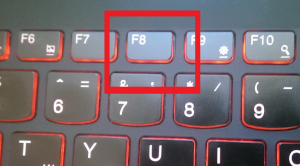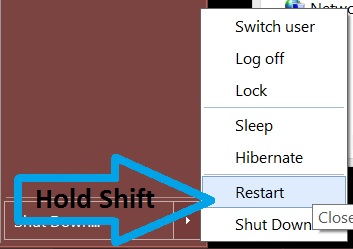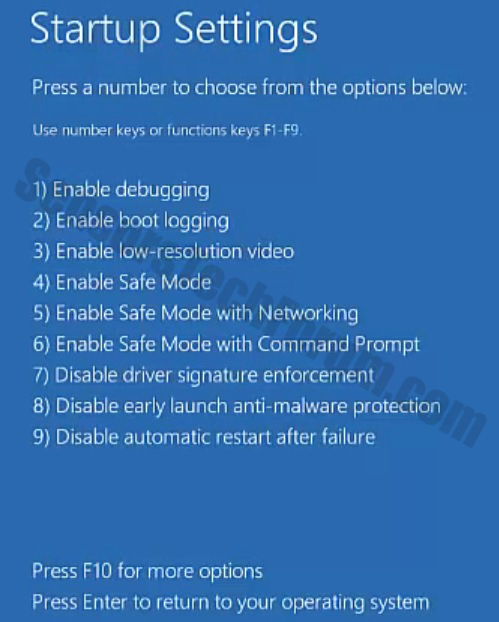| Name | Trojan.Broluxa |
| Type | Infostealer Trojan Horse |
| Short Description | The malware uses phishing attacks to steal user entered credentials. |
| Symptoms | Weird behavior of the web browser. Browser is slow, starts slowly. You are logged out of a web page you are logged in automatically. |
| Distribution Method | Targeted Attacks. More information in the ‘How Did I Get It’ Paragraph.. |
| Detection tool | Download Malware Removal Tool, to See If Your System Has Been Affected By Trojan.Broluxa |
 Trojan.broluxa is a spyware type of trojan that is mainly utilized when targeted attacks on individuals or organizations take place. The trojan includes exploit scripts that take advantage of several Windows vulnerabilites and it creates files in the Windows file system that are started afterwards. What is more the trojan may be downloading other malicious files via an active connection with a remote location. This threat is also reported by Symantec researchers to use phishing web links in order to steal user entered data.
Trojan.broluxa is a spyware type of trojan that is mainly utilized when targeted attacks on individuals or organizations take place. The trojan includes exploit scripts that take advantage of several Windows vulnerabilites and it creates files in the Windows file system that are started afterwards. What is more the trojan may be downloading other malicious files via an active connection with a remote location. This threat is also reported by Symantec researchers to use phishing web links in order to steal user entered data.
Trojan.Broluxa – How Did I Get Infected?
This type of trojan is mainly used for targeted cyber-attacks. This means that it may come specifically tailored according to your OS, antivirus shields and firewall program. Targeted infections come via many techniques:
- Spoof email messages – mails sent from an address that resembles a one known to the user or is the same. These attacks are usually done when the cyber-criminal has access to the local network of an organization or when they know an individual’s mail address’ contact list.
- Direct attack on the computer – occurs when the PC is unattended and can be accessed physically by a cyber-crook. The criminal may either open an online link that deliberately infects the PC, disable antivirus and firewall protections to activate the virus and others.
- Malicious link sent out by someone in an online chat.
- Malicious link being distributed as a reply or a comment in a forum or anywhere else online.
Trojan.Broluxa – More About It
Once activated on the computer, the trojan may take advantage of the vulnerabilities CVE-2014-6332 and CVE-2015-5119. Once the trojan has been executed it is reported to create the following files in the user profile:
→Start Menu\Programs\Startup\{randomfilename}.exe
AppData\Roaming\Microsoft\Windows\Start Menu\Programs\Startup\[randomfilename].exe
The file names of the files are usually different by the most often met executable names are:
→svchost.exe; notepad.exe; dllhost.exe, explorer.exe
Modern trojan horses like to choose the same names of their executables as some respectable windows executable files to disguise themselves from antivirus programs.
What is more, this particular trojan horse uses a bank URL list that it downloads from another location:
→“|https://|luxurybro.co.kr/data/geditor/1501/123”
The downloaded list is then saved in a url.txt file in the %Temp% Windows folder.
Also, the trojan is reported to download yet another list that is being saved eventually as the ‘title.txt’ file, same as the URL list. The location for the list is last reported to be this one:
→“|https://|luxurybro.co.kr/data/geditor/1501/456”
This is done with the purpose to fulfil the missing elements of what this trojan exactly aims to do. Its main activity involves monitoring internet browser on compromised computers and compares browser URLs and titles with the data in the saved .txt files. Also, the website reported which is luxurybro.co.kr is being blocked from most antivirus software and rendered unsafe.
If the trojan detects matches between the two, it makes a new iexplorer.exe process. It then attacks the user directly by setting these phishing pages in order to steal any user entered information:
→|https://|fas-go-jp-security.servecounterstrike.com/main
|https://|fas-go-jp-security.kensatsutyo.com/main
The phishing sites may be exactly the same as the websites users visit daily, such as the Facebook login page or anything else. The worse thing is that users may not even know that this is happening. One symptom of identifying a phishing page is if the page refreshes when you press the ‘Login’ button and says something like ‘Wrong password’, even if the user typed it correctly. This is no guarantee that you have a phishing page but it is one way to detect them.
The consequences for the user may be many, main of which may be the loss of his financial information or username, mail address, passwords and other credentials.
Removing Trojan.Broluxa Completely
Since this trojan may be specifically designed for your computer and you have noticed one of the symptoms in the table above, make sure you act swiftly towards detection and removal. To do this, please follow the step-by-step removal manual below. Also, bear in mind that you should use an advanced anti-malware tool that is the best solution for removing threats completely from your system.
Step 1: Start Your PC in Safe Mode to Remove Trojan.Broluxa.
Removing Trojan.Broluxa from Windows XP, Vista, 7 systems:
1. Remove all CDs and DVDs, and then Restart your PC from the “Start” menu.
2. Select one of the two options provided below:
– For PCs with a single operating system: Press “F8” repeatedly after the first boot screen shows up during the restart of your computer. In case the Windows logo appears on the screen, you have to repeat the same task again.
– For PCs with multiple operating systems: Тhe arrow keys will help you select the operating system you prefer to start in Safe Mode. Press “F8” just as described for a single operating system.
3. As the “Advanced Boot Options” screen appears, select the Safe Mode option you want using the arrow keys. As you make your selection, press “Enter“.
4. Log on to your computer using your administrator account
While your computer is in Safe Mode, the words “Safe Mode” will appear in all four corners of your screen.
Removing Trojan.Broluxa from Windows 8, 8.1 and 10 systems:
Substep 1:
Substep 2:
Whilst holding down Shift button, click on Power and then click on Restart.
Substep 3:
After reboot, the aftermentioned menu will appear. From there you should choose Troubleshoot.
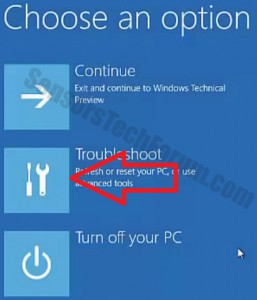
Substep 4:
You will see the Troubleshoot menu. From this menu you can choose Advanced Options.

Substep 5:
After the Advanced Options menu appears, click on Startup Settings.
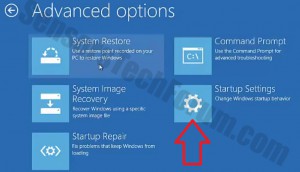
Substep 6:
Substep 7:
A menu will appear upon reboot. You should choose Safe Mode by pressing its corresponding number and the machine will restart and boot into Safe Mode so you can scan for and remove Trojan.Broluxa.
Step 2: Remove Trojan.Broluxa automatically by downloading an advanced anti-malware program.
To clean your computer you should download an updated anti-malware program on a safe PC and then install it on the affected computer in offline mode. After that you should boot into safe mode and scan your computer to remove all Trojan.Broluxa associated objects.
Preparation before removing Trojan.Broluxa.
Before starting the actual removal process, we recommend that you do the following preparation steps.
- Make sure you have these instructions always open and in front of your eyes.
- Do a backup of all of your files, even if they could be damaged. You should back up your data with a cloud backup solution and insure your files against any type of loss, even from the most severe threats.
- Be patient as this could take a while.
- Scan for Malware
- Fix Registries
- Remove Virus Files
Step 1: Scan for Trojan.Broluxa with SpyHunter Anti-Malware Tool



Step 2: Clean any registries, created by Trojan.Broluxa on your computer.
The usually targeted registries of Windows machines are the following:
- HKEY_LOCAL_MACHINE\Software\Microsoft\Windows\CurrentVersion\Run
- HKEY_CURRENT_USER\Software\Microsoft\Windows\CurrentVersion\Run
- HKEY_LOCAL_MACHINE\Software\Microsoft\Windows\CurrentVersion\RunOnce
- HKEY_CURRENT_USER\Software\Microsoft\Windows\CurrentVersion\RunOnce
You can access them by opening the Windows registry editor and deleting any values, created by Trojan.Broluxa there. This can happen by following the steps underneath:


 Tip: To find a virus-created value, you can right-click on it and click "Modify" to see which file it is set to run. If this is the virus file location, remove the value.
Tip: To find a virus-created value, you can right-click on it and click "Modify" to see which file it is set to run. If this is the virus file location, remove the value.Step 3: Find virus files created by Trojan.Broluxa on your PC.
1.For Windows 8, 8.1 and 10.
For Newer Windows Operating Systems
1: On your keyboard press + R and write explorer.exe in the Run text box and then click on the Ok button.

2: Click on your PC from the quick access bar. This is usually an icon with a monitor and its name is either “My Computer”, “My PC” or “This PC” or whatever you have named it.

3: Navigate to the search box in the top-right of your PC's screen and type “fileextension:” and after which type the file extension. If you are looking for malicious executables, an example may be "fileextension:exe". After doing that, leave a space and type the file name you believe the malware has created. Here is how it may appear if your file has been found:

N.B. We recommend to wait for the green loading bar in the navigation box to fill up in case the PC is looking for the file and hasn't found it yet.
2.For Windows XP, Vista, and 7.
For Older Windows Operating Systems
In older Windows OS's the conventional approach should be the effective one:
1: Click on the Start Menu icon (usually on your bottom-left) and then choose the Search preference.

2: After the search window appears, choose More Advanced Options from the search assistant box. Another way is by clicking on All Files and Folders.

3: After that type the name of the file you are looking for and click on the Search button. This might take some time after which results will appear. If you have found the malicious file, you may copy or open its location by right-clicking on it.
Now you should be able to discover any file on Windows as long as it is on your hard drive and is not concealed via special software.
Trojan.Broluxa FAQ
What Does Trojan.Broluxa Trojan Do?
The Trojan.Broluxa Trojan is a malicious computer program designed to disrupt, damage, or gain unauthorized access to a computer system. It can be used to steal sensitive data, gain control over a system, or launch other malicious activities.
Can Trojans Steal Passwords?
Yes, Trojans, like Trojan.Broluxa, can steal passwords. These malicious programs are designed to gain access to a user's computer, spy on victims and steal sensitive information such as banking details and passwords.
Can Trojan.Broluxa Trojan Hide Itself?
Yes, it can. A Trojan can use various techniques to mask itself, including rootkits, encryption, and obfuscation, to hide from security scanners and evade detection.
Can a Trojan be Removed by Factory Reset?
Yes, a Trojan can be removed by factory resetting your device. This is because it will restore the device to its original state, eliminating any malicious software that may have been installed. Bear in mind that there are more sophisticated Trojans that leave backdoors and reinfect even after a factory reset.
Can Trojan.Broluxa Trojan Infect WiFi?
Yes, it is possible for a Trojan to infect WiFi networks. When a user connects to the infected network, the Trojan can spread to other connected devices and can access sensitive information on the network.
Can Trojans Be Deleted?
Yes, Trojans can be deleted. This is typically done by running a powerful anti-virus or anti-malware program that is designed to detect and remove malicious files. In some cases, manual deletion of the Trojan may also be necessary.
Can Trojans Steal Files?
Yes, Trojans can steal files if they are installed on a computer. This is done by allowing the malware author or user to gain access to the computer and then steal the files stored on it.
Which Anti-Malware Can Remove Trojans?
Anti-malware programs such as SpyHunter are capable of scanning for and removing Trojans from your computer. It is important to keep your anti-malware up to date and regularly scan your system for any malicious software.
Can Trojans Infect USB?
Yes, Trojans can infect USB devices. USB Trojans typically spread through malicious files downloaded from the internet or shared via email, allowing the hacker to gain access to a user's confidential data.
About the Trojan.Broluxa Research
The content we publish on SensorsTechForum.com, this Trojan.Broluxa how-to removal guide included, is the outcome of extensive research, hard work and our team’s devotion to help you remove the specific trojan problem.
How did we conduct the research on Trojan.Broluxa?
Please note that our research is based on an independent investigation. We are in contact with independent security researchers, thanks to which we receive daily updates on the latest malware definitions, including the various types of trojans (backdoor, downloader, infostealer, ransom, etc.)
Furthermore, the research behind the Trojan.Broluxa threat is backed with VirusTotal.
To better understand the threat posed by trojans, please refer to the following articles which provide knowledgeable details.


